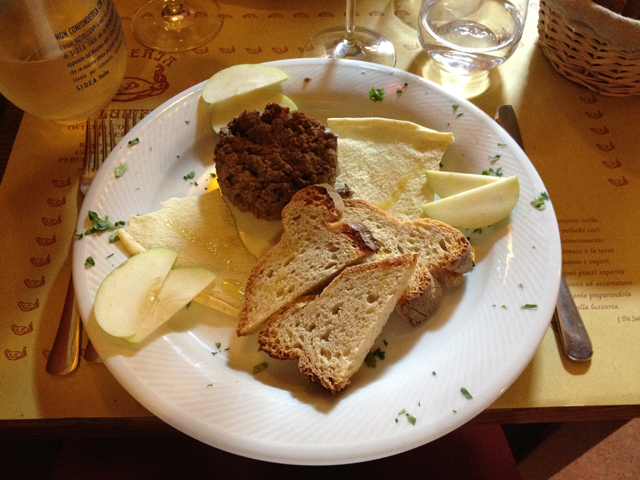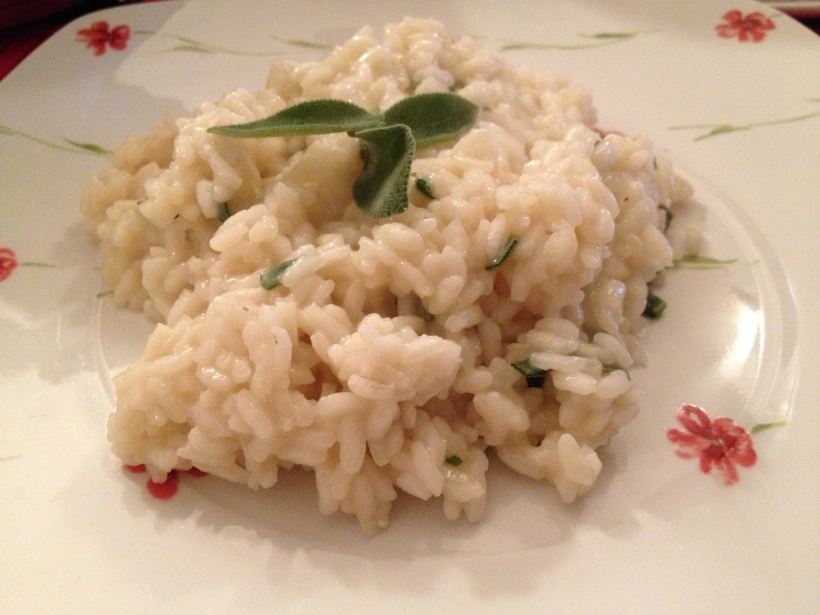 Un’accogliente osteria con cucina, dove piatti deliziosi e originali tengono testa a una lunga e dettagliata carta di vini. Ambiente piccolo e caldo, tavolini in legno e tovagliette di carta, una botte accanto al bancone, questo locale fa sentire come a casa.
Un’accogliente osteria con cucina, dove piatti deliziosi e originali tengono testa a una lunga e dettagliata carta di vini. Ambiente piccolo e caldo, tavolini in legno e tovagliette di carta, una botte accanto al bancone, questo locale fa sentire come a casa.
Appena fuori le mura che circondano il centro storico di Perugia, all’inizio di una viuzza che sale verso il quartiere dell’università, l’osteria La Lumera è un ristorantino invitante e onesto, dove assaggiare le prelibatezze che la terra umbra sa offrire.
Ricette del territorio e prodotti di stagione rivisitati con qualche tocco d’originalità e sfiziosità curiose sono distribuite in pochi piatti, uno più invitante dell’altro. “Non conosco nulla che vellichi così voluttuosamente lo stomaco e la testa quanto i sapori di quei piatti saporiti che vanno ad accarezzare la mente preparandola alla lussuria”, si legge sulle tovagliette nelle parola di De Sade mentre si aspetta la portata successiva, e non sembra esserci niente di più vero di questa frase.
Si inizia con il gustoso pane casereccio da accompagnare con abbondanti porzioni di salumi e formaggi tipici o con un piatto unico di degustazione di presidi slow food, tra cui il puzzone di Moena, la fagiolina del Trasimeno e la pitina di capra alla griglia. Da assaggiare il patè di fegato alla perugina battuto al coltello e accompagnato da fette di mela verde e crostini abbrustoliti.
Tra i primi, spiccano gli umbricelli con guanciale e pecorino, ma anche i taglierini al ragù di salsiccia umbra, la cui pasta è ruvida al punto giusto e assorbe i condimenti così saporiti e genuini.
Sui secondi, poi, ci si sbizzarrisce con lo stinco di maiale al forno al ginepro e, per i più sfiziosi, il filetto di maiale alla griglia, avvolto in strisce di lardo locale e accompagnato da salsa al vino rosso, scalogno brasato e verdure.
Saranno le stampe antiche alle pareti, l’ambiente raccolto, la gentilezza dei giovani camerieri o il vino della casa, ma seduti a questi tavolini la fame sembra non passare mai.
Se c’è ancora un po’ di spazio per il dolce, meritano un assaggio il budino di patate e il semifreddo ai fagioli cannellini, servito con abbondante panna montata. Originali e delicati, per chi ama assaggiare piatti curiosi e fuori dagli schemi.
Dove: La Lumera, Corso Bersaglieri 22, Borgo Sant’Antonio, Perugia, tel. 075 5726181
Costo: antipasti sugli 8 euro, primi sotto i 10 e secondi intorno ai 15 euro, dolce a 4 euro. Si spende di più scegliendo vini particolari, ma lo sfuso della casa è ottimo. Il coperto è compreso nel prezzo.
Articolo pubblicato su Latitudeslife.com





